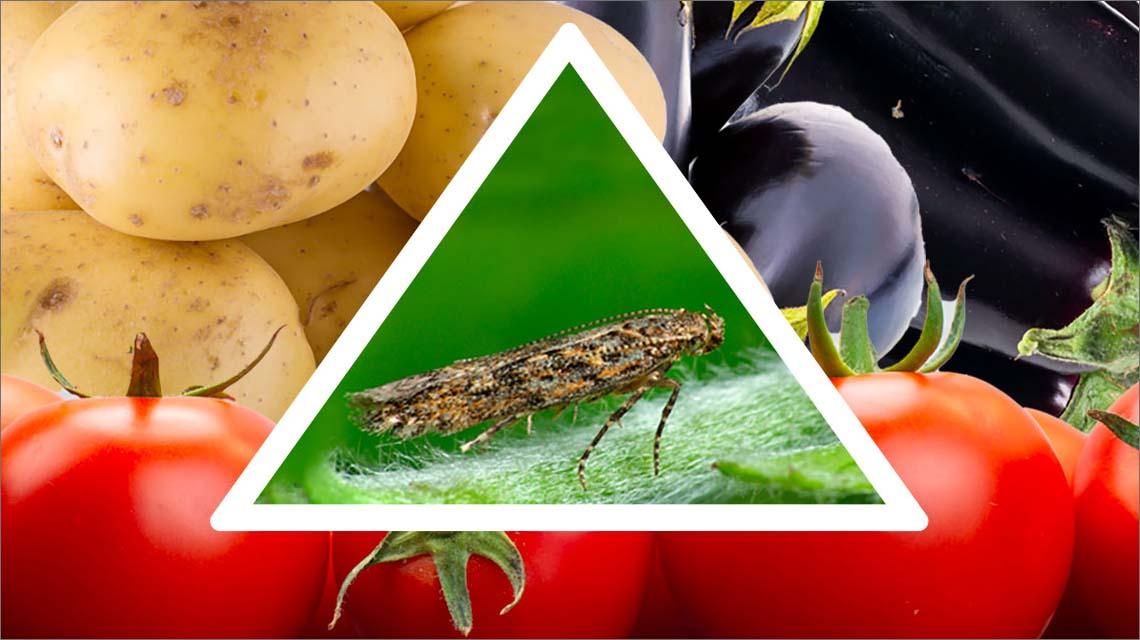Italian National Agency for New Technologies, Energy and Sustainable Economic Development

Agriculture: From enea a new smart technology to stop invasive exotic pests
Due to global warming, within a few years new areas of Europe, Asia and America could become favorable environments for the spread of insects harmful to agriculture, such as the tomato moth (Tuta absoluta), affecting tomato, potato and eggplant crops. Now, an international study conducted as part the European project MED-GOLD coordinated by ENEA[1] and published in Biological Invasions has deployed a technology stemmed from a long collaboration between the Agency and the University of California in Berkeley to predict its invasive potential in Europe and North Africa but also in areas not yet affected by the tomato moth, like the United States and Mexico.
Compared to the common statistical correlation between the presence of a species and the climate observed in the same area (the most common risk assessment method for invasive species), the technology used by ENEA in this study projects the very biology of the species into future climate scenarios, allowing both greater reliability of results and possible control and eradication strategies at the territorial level.
"We used physiology-based demographic models that simulate population dynamics of these insects in relation to climate change scenarios and weather conditions, including the effects of humidity and solar radiation on the microclimatic temperatures experienced by the larvae and pupae within the leaf ”, explained one of the authors of the study, Luigi Ponti, researcher at the ENEA Laboratory of Sustainability, Quality and Safety of Agri-food Production.
The tomato moth is a subtropical species native to South America, particularly Peru, where it was initially identified at over 3 thousand meters above sea level. Its invasive potential was not identified until it reached Spain in 2006, traveling, in a few years, about 4 thousand kilometers and reaching every corner of the Mediterranean basin, then expanding globally, where it also caused food safety concerns.
In ten years, Tuta absoluta has invaded more than 60% of the world's tomato growing areas, which include six of the ten main producing countries (India, Turkey, Egypt, Iran, Italy and Spain). It has also recently invaded the world's largest producer, China, sparing for the moment the USA and Mexico which are the fourth and ninth producers in the world respectively. "At the beginning in 2006, data relating to the 'thermal biology' of Tuta absoluta were only available for temperatures above 12 ° C. Only after the invasion of central Europe in 2015 did the studies expand below that threshold.
But only in 2019 was it demonstrated how Tuta absoluta can survive in sub-zero temperatures, which gives this species a very high and unfortunately underestimated invasive potential. In fact, studies conducted for over a decade after the first discovery of the species in Europe in 2006 - based on partial data - had identified only the coastal area of southern Europe as a favorable environment for the spread of this parasite. Hence the need to implement new study tools that go beyond the limits of traditional models that use 'only' data relating to the presence or absence of the parasite to find correlations with the climate and thus predict the invasive potential ", pointed out Ponti.
"According to our estimates, as a result of global warming by 2040 this insect will expand considerably north and east in Europe, reaching areas of Eurasia that are still unscathed; while North Africa and the Middle East will increasingly become inhospitable places due to high temperatures. In fact, we have shown that a temperature above 25 ° C has an impact on the mortality of Tuta absoluta 16.5 times greater than low temperatures, below 7.9 ° C. Something unthinkable when this pest arrived in Europe, being known as the main parasite of tomatoes in areas of Brazil with a warm climate similar to the coastal areas of the Mediterranean ”, pointed out the ENEA researcher.
The expansion of this insect now includes many developing countries in both Africa and Asia where the resources to implement pest prevention and eradication policies are insufficient. In eight years, the tomato moth has invaded the entire African continent, posing a serious threat to food security, with economic losses ranging so far been between 70 and 80 million dollars a year. In addition, most of the farmland in Africa and Asia is managed by small-holders, many of whom had never used insecticides before the recent and sudden global biological invasions by species like Tuta absoluta.
"This study wants to provide an effective tool to improve our ability to prevent and mitigate current and future threats to agriculture, such as invasive alien species, which unfortunately generally tend to worsen due to climate change", concluded Luigi Ponti.
For more information please contact:
Luigi Ponti, ENEA - Sustainability, Quality and Safety of Agri-food Production Laboratory
Ponti, L., Gutierrez, A.P., de Campos, M.R., Desneux, N., Biondi, A., Neteler, M., 2021. Biological invasion risk assessment of Tuta absoluta: mechanistic versus correlative methods. Biological Invasions 23. https://doi.org/10.1007/s10530-021-02613-5
Note
[1] Turning climate-related information into added value for traditional MEDiterranean Grape, OLive and Durum wheat food systems (MED-GOLD) https://cordis.europa.eu/project/id/776467
